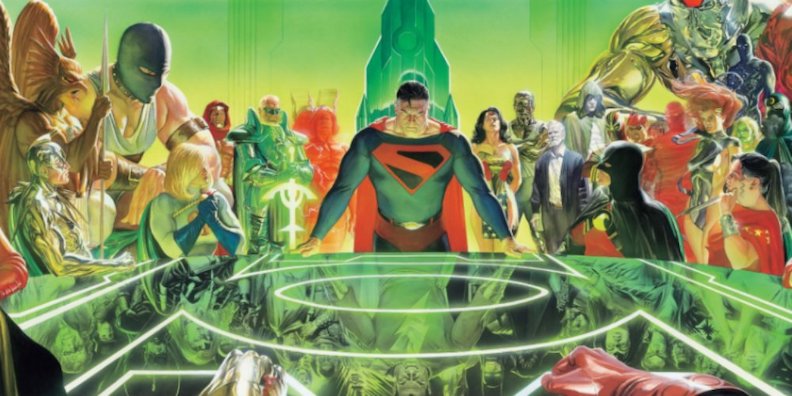Next week, the CW debuts the latest ARROWVERSE crossover, a three-part event spanning THE FLASH, ARROW and SUPERGIRL titled “Elseworlds.” Like the previous crossover episodes, the title has its roots in DC Comics’ storied publication history. The crossover title is a nod to a DC Comics imprint that told stories that were (sometimes way) outside of the continuity of the time.
The imprint was a way to give creators a bit of the license to tell outside-the-box stories that faded when continuity was streamlined after 1985’s CRISIS ON INFINITE EARTHS. While “imaginary stories” were more common when the company could claim a story happened on another Earth in the multiverse, DC Comics’ model post-Crisis featured only one universe. The imprint was created in 1989 with the Batman story, GOTHAM BY GASLIGHT, though the imprint wasn’t made official until 1991’s BATMAN: HOLY TERROR, the first story to carry the ELSEWORLDS logo.
Aside from the 1994 Elseworlds Annuals the company published, most of the titles under the imprint featured Superman or Batman in one way or another. Only seven Elseworlds titles produced between 1989 and 2004 had no association with the company’s two main characters. Of the dozens of stories that carried the imprint over those 15 years, there have been several that have stood the test of time as classics, while others have remained hidden gems that I don’t think get the love they deserve.
Let’s take a look at the first batch of my favorite ELSEWORLDS comics:
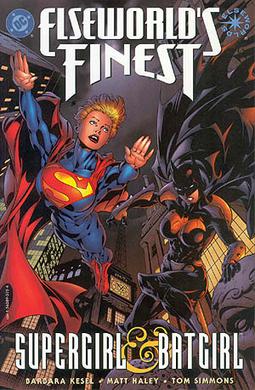
Elseworld’s Finest: Supergirl & Batgirl (1998) – A Prestige-format one-shot set in a world where Superman didn’t survive the trip to Earth from Krypton and Bruce Wayne never became Batman, the book told the story of how Supergirl and Batgirl forged an alliance against a beefed-up Joker and a secretly corrupt Luthor, along with scientist Dr. Emil Hamilton.
The creative team of Barbara Kesel, Matt Haley and Tom Simmons show how different the worlds of Metropolis and Gotham are with the absence of its regular heroes, complete with a radically different Justice League. But the heart of the story is the relationship between Barbara Gordon and Kara Zor-El and how they turn a grudging partnership into a bond of friendship, much like their male counterparts. It’s a shame we didn’t get more stories set in this world.
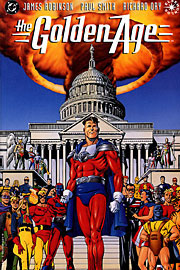
The Golden Age (1993) – This is, in my opinion, the story that put James Robinson on the map. Before he set up operations in Opal City to write his legendary run on STARMAN, Robinson and artists Paul Smith and Richard Ory told a story of the last gasp of members of the Justice Society and the All-Star Squadron after the end of the second World War. It’s a dark series, highlighting the flaws of several of the company’s Golden Age masked men and women as they adjust to the new way of the world.
And because it’s set around WWII, of course Adolf Hitler is involved, as his brain was transferred into the brain of Dan the Dyna-Mite Man, alongside the Ultra Humanite, who has taken over the body of hero Tex Thompson, Mr. America. There’s a lot of death and a lot of destruction. It’s a sobering look at the last vestiges of an era of heroes that was about to give way into a new age. But it was fairly influential to much of what Geoff Johns did when he took over the JSA, as he incorporated elements of this story into the team’s continuity.
JSA: The Liberty File (1999-2000) – Another story set in the 1940s, this time from Dan Jolley, Tony Harris and Ray Snyder. THE LIBERTY FILE takes Batman, Hourman and Doctor Mid-Nite and makes them covert government agents hunting down the Joker for information on Germany’s secret weapon.
The two-issue Prestige format miniseries got a sequel in 2003 – THE UNHOLY THREE – which were all collected into one edition. Another story, THE WHISTLING SKULL, with writer B. Clay Moore, was released in 2012. All three miniseries are great reads, though I felt the third volume was the weakest of the bunch.
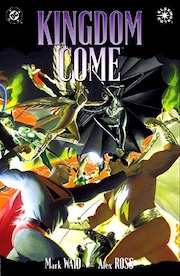
Kingdom Come (1996) – Maybe the most famous ELSEWORLD story ever, from writer Mark Waid and artist Alex Ross. Set 20 years in a future where Superman has retired after the Joker killed off the staff of the Daily Planet – including Clark Kent’s wife, Lois Lane, the story examines what happens when people with superpowers start to run amok with no real moral compass.
A war brews between established heroes, led by a returning Superman, against the younger generation, led by a near-crippled Batman, and the two sides maneuver against each other while Luthor and a band of villains conspire with his secret weapon – a brainwashed Billy Batson. It all culminates in a deadly final battle that wipes out many of the metahumans involved in the war.
Alex Ross’s art makes this story unbelievably great, and Mark Waid takes Ross’s tale and puts words to it that echo even to this day. The art makes this not just a must-own, but something that should be read in the oversized Absolute format to get the full breadth of its beauty.
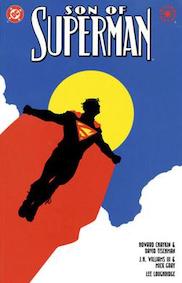
Son of Superman (1999) – Another story set in an unspecified future, where Superman has been missing in action while Lois Lane raises their son, Jon, on her own. When a solar flare unleashes Jon’s powers, Lois is forced to tell him the truth of his parentage and Jon decides to take after his dad in a makeshift costume.
After he finds his father, with the help of now-terrorists Pete Ross and Lana Lang, the reunited family has to bring down another Luthor conspiracy with the help of Batman and Wonder Woman, to restore a semblance of order to the world. The original hardcover graphic novel was beautifully written by Howard Chaykin and David Tischman, with gorgeous art from J.H. Williams III and Mick Gray.
That’s all for our first dive into the ELSEWORLDS. Check back later this week for a second selection of favorites before the ARROWVERSE crossover starts!
